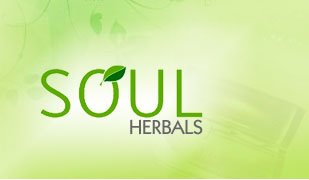
Panchakarma (Sanskrit: , literally meaning "five actions") is the word for the five different procedures used in Ayurveda which are believed to purify the body. This is done in two ways: 1)pacifying the aggravated Doshas by using appropriate diet, natural herbs and minerals, and 2) eliminating the increased Doshas from the body.
Panchakarma (meaning "five actions") developed in
ere are regional variations in therapeutic procedure as we
ll as in the equipment used. According to Charaka, the five actions are
- Nasya (nasal therapy)
- Vamana (emesis or vomiting)
- Virechana (purging)
- Two
kinds of Vasti (therapeutic enema) : Nirooha Vasti and Sneha Vasti. Herbal decoctions are used for Nirooha Vasti and herbal oils for Sneha Vasti.
Another school, that of the surgeon Sushruta, regards Rakta (blood) also as a dosha
(humour), the vitiation of which can cause diseases, and advocates Raktamokshana (bloodletting) as the fifth in the Panchakarma therapies. In this school the five therapies are Nasya, Vamana, Virechana, Vasti and Raktamokshana. As bloodletting involves medical venesection, it is no longer popular. Leeching, however, is still practised.
This five-fold therapy is aimed at Shodhana, the eradication of the basic cause of disease. Shodhana or eradication, along with Shamana, the mitigation of the disease and its symptoms, are the two concepts of disease management in Ayurveda. Panchakarma is also believed by practition
ers to have a rejuvenating effect.
Panchakarma is always performed in three stages - Purva Karma (pre-treatment), Pradhana Karma (primary treatment) and Paschat Karma (post-treatment). The patient who opts for any one of the five therapies must invariably undergo all three stages.

Pre-treatment: Pre-treatment consists of oil therapy, massage and fomentation therapy.
Snehana (oleation or oil therapy) and Swedana (sudation) are the two Purva Karma procedures. Snehana (internal and external oleation) is believed by followers to loosen the ama they believe is stuck in various sites of the body. Sneh
ana is administering sneha or snigdha dravyas in the form of taila or gritha to the body. The sneha is given with herbs tailored to what the practitioner believes will help a specific client's disease. If sneha is given in a pure form without adding herbs its called Achcha sneha, and is considered the most effective.[citation needed]Snehana is given in the early morning for a maximum of seven days. Snehana is believed to help the doshas or toxins to move into the alimentary tract from the extremities for easy evacuation (vilayana and uthkleshana of doshas). If snehana is not given before panchakarma, the body is understood to bend like a thin dry stick through the effect of five karmas.
Oil massage (Sanskrit: abhyanga) is an important treatment in Ayurveda. It involves a therapeutic massage of about 45 minutes' duration, which is believed by followers to treat disease. Th
e massages are done with two therapists working on either side of the patient who lies on a wooden bed called a droni in Sanskrit. Special attention is paid to the foot area. Practitioners of panchakarma believe there are nerve nodal points (called Marmas in Sanskrit) on the soles of the feet, which are closely related to certain internal organs. The sole of the right foot is massaged with clockw
ise movement and the left foot with anti-clockwise strokes. During the treatment the patient is made to recline in seven standard positions. This begins with the person seated in an upright position, supine or flat on the back, turning to the right side, supine again, turning to the left side, supine once again, and finally sitting as in the beginning, Sometimes the position of lying face down is also adopted.
Swedana is a fomentation therapy given to the whole or part of the body depending on the disease. Steam of medicated herbs is given, using the fire-saagni sweda. Without using the fire fomentation, anagni sweda is done by sitting under the sun, being in thirst, hunger, covering the body with thick bed sheets, or being in a closed dark room. Swedana is believed to dilate channe
ls in the body to facilitate the movement of the ama towards the Koshta (alimentary canal). Fomentation covers both dry and sticky materials (snigdha dravyas). It is believed to help in the liquifaction of doshas; it is given after Abhyanga or massaging the body, so after the seventh day of oleation, the patient is made ready for Vamana and other procedures.

Primary Treatment: The ama that reaches the Koshta is believed to be eliminated during the Prad
hana Karma (primary treatment). This is the panchakarma itself: Nasya (nasal therapy), Vamana (emesis or vomiting), Virechana (purging) and two kinds of Vasti (therapeutic enema), Nirooha Vasti and Sneha Vasti. Herbal decoctions are used for Nirooha Vasti and herbal oils for Sneha Vasti.
After Treatment: Dietary regimens, restricted bodily exertion and the intake of herbs believed to promote health come under the Paschat Karma (post-treatment). Paschatkarma is administering required food for the body after the purification of the body, to intensify the agni (digestion power) which will subside after Panchakarma. During the treatments, food is given according to the degree of purification intended for the body.

Ayurveda specifies vata dosha as kinetic energy and the root of the body's communication process, residing in the colon and bones, and responsible for emotions like reaction assimilation and perception.
ReplyDeleteAyurvedic Medicine India